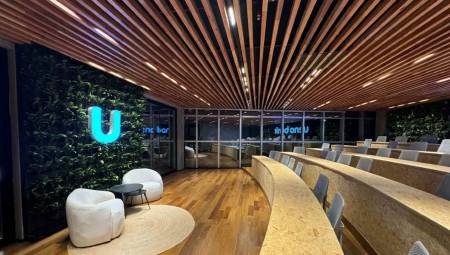 Latin America. Digital workspaces are increasing at the epicenter of business, providing flexibility, innovation and focusing on the end user. Companies are designing infrastructure that enables centralized and secure access to applications, services and resources anytime, anywhere, from the computer, laptop or smartphone. At the same time, IT benefits from simpler, more secure, flexible management and the possibility of cloud storage.
Latin America. Digital workspaces are increasing at the epicenter of business, providing flexibility, innovation and focusing on the end user. Companies are designing infrastructure that enables centralized and secure access to applications, services and resources anytime, anywhere, from the computer, laptop or smartphone. At the same time, IT benefits from simpler, more secure, flexible management and the possibility of cloud storage.
Gartner describes digital workspaces as a "business strategy to promote effectiveness and engagement through the use of more consumer-driven computerized environments." On the other hand, this year's IDC forecast shows that 65% of companies globally are committed to transforming into information-based companies, moving the organizational focus to relationships, people and intangible capital.
At the same time, the level of connectivity related to products, and processes will increase all value chains in the industry by 50%. To be sure, digital workspaces are evolving fast and provide many benefits for technology departments.
The IT department should be a facilitator
The technology department plays a fundamental role in the implementation of the digital workspace and it is imperative that they are seen as facilitators rather than obstacles throughout the company. This includes looking beyond its functions and doing x-rays of users' performance levels. CIOs may find this challenging as this is an orientation they are not used to.
But adaptation is imperative to make the concept work. A robust mobile work strategy allows IT to become part of the board of directors, taking a role of influence in the culture, design and performance of the business. Feedback and teamwork between IT and employees is vital to making digital workspaces successful and taking them to the next level.
Given this panorama, Ali García, points out 6 benefits offered by digital workspaces to the IT department:
1) Automated management generates less workload to the IT department: These spaces allow automated management. The application of distribution of tasks can be automatic, providing greater security and compliance with them. It also makes it easier for IT to quickly adapt to business change needs, and workflow can be quickly adjusted when managers feel it's needed. New technologies can be easily integrated without interrupting anyone's work regardless of the department.
2) Supplying virtualized desktops to newcomers: Virtual desktops are the force that moves digital workspaces. They provide businesses with cost-effectiveness and a secure way for workers to access applications and resources wherever they are, from any device. This technology helps reduce the time for IT departments to set up new computers and limits expenses on management, support, and hiring. Like everything, it is centrally managed, stored and secured. IT no longer needs to back up files or scan viruses, for example, on individual devices. At the same time, security is improved, as access to and use of certain applications can be restricted and monitored.
3) A single app store controls app proliferation: Turning to digital workspaces can allow us access to our tools and files wherever and whenever we want, personalized with our apps and data. On the other hand, access to applications can be obtained by a single store that facilitates administration. Having a central solves the problems of logins and crashes.
4) A single login means optimized passwords: people and passwords are not a good mix, and we are all guilty of forgetting them. A single income makes it easier to manage accounts. The Amazon Services website, for example, offers a single entry into Amazon Workdocs and Amazon Workspace capabilities. In addition, the session resumes automatically. These advances restore the previous work of the workers at the moment an interruption in the session is detected.
5) Broad security overview: the digital workspace allows IT to obtain a panoramic view, beyond securing devices, strategies are sought using situational information, such as location, time sharing with IP, IT Stack, URL, etc., to make decisions about potential risks. With this automation, technology departments can have a more extensive view of processes and workflows to monitor any abnormal behavior that happens in the chain.
6) Better communication with the board of directors: adapting to digital workspaces opens a better dialogue between managers and IT in relation to the performance, effectiveness of the workforce and culture of the company. It is key to establish IT as an enabler among employees, rather than a barrier to innovation. This equates to more motivated and inspired workers.
Looking to the future
In conclusion, companies in all sectors are facing real challenges to offer their employees the technologies they need. But those who can see the strategic value of this work environment, and can stay ahead of trends, will have a clear advantage in productivity, innovation, and collaboration. However, implementing a strategy is not the end of the game.
Technology departments must continually evaluate and update workspaces in order to reap rewards in the future. To do this, Orange Business Services offers customized, unified and coherent solutions that can be implemented in all locations and adapted to the requirements and practices as the business evolves.
Text written by Samir El Rashidy, Director of Solutions of Orange Business Services for Latin America.















